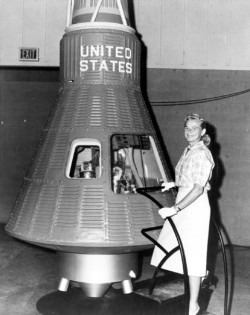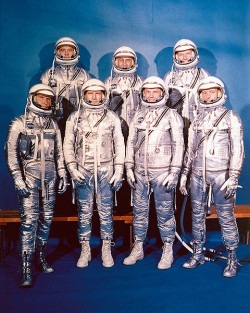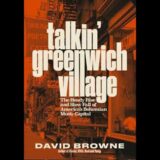One of the ways writer Kelly Sue DeConnick is developing the new Captain Marvel is by giving her firm links to the history and culture of women’s aviation. This approach combines the real world and Marvel Universe in a way that comics fans haven’t seen in several years.
Captain Marvel #1, DeConnick introduces Carol Danvers’ flying mentor, Helen Cobb. Cobb is described as a record-holding pilot and a member of the “Mercury 13 program,” without giving a lot of details. Captain Marvel #3 is now out, and, while the plot of the first story line is still taking shape, it’s possible to talk about some of DeConnick’s sources.

Helen Cobb is almost certainly inspired by Geraldyn “Jerrie” Cobb, a prominent woman pilot who became involved in an abortive effort to add women astronauts to the Project Mercury program in the early 1960s.
Here’s what happened, according to two excellent books on the subject: Promised the Moon by Stephanie Nolen (Thunder’s Mouth Press, 2002) and The Mercury 13 by Martha Ackmann (Random House, 2003).
NASA commissioned a non-government organization called the Lovelace Clinic to do medical tests on the newly-chosen Mercury 7 astronauts. The director of the clinic decided that they were going to test women as well. There was more than scientific curiosity behind this decision. There was a commonly held belief that the USSR was training woman for space (which proved to be true) and scientists were establishing the basic principles for manned space flight. Maybe it would be smarter to use women as astronauts, because they were smaller and used less oxygen….
During 1960 and ’61, Jerrie Cobb and 12 other women went through a series of tests and examinations. They did well, equal to or better than the men in many cases. However, NASA refused to let the tests continue.. Two of the reasons the agency gave were also presented in CM #3. The women were not trained to be jet test pilots and losing a woman in space would be a public relations disaster.
Cobb, and some of the other women, continued to fight the decision, even managing to organize a short congressional hearing on the topic. Over time, NASA’s policies changed; Sally Ride, who died earlier this year, became the first American woman in space in 1983. However, neither Cobb nor her associates ever made it.

Referring to the group as the Mercury 13 didn’t start until relatively recently. Cobb sometimes called them the Fellow Lady Astronaut Trainees (F.L.A.T.s), but that wasn’t even accepted by everyone in the group.
In the comics, Helen Cobb eventually became a bar owner. Jerrie Cobb went in a very different direction. She was always extremely shy—in part due to a speech impediment—and she was further traumatized by her brush with notoriety in the early 1960s. She eventually became a pilot for a missionary organization in Latin and South America.
It should be noted, though, that the story in CM #2 about Helen Cobb having to escape from a Peruvian general does have a basis in reality. After World War II, Jerrie Cobb did deliver surplus U.S military planes to various buyers in South America.
In addition, Helen Cobb refers to The 99s in issue one. That’s a real-life organization of women aviators, co-founded by Amelia Earhart. The name refers to the number of prospective members who attended the first meeting.
To me, the Mercury 13 storyline is reminiscent of Truth:Red White and Black the 2003 Captain America story where it is revealed that the super-soldier serum was secretly tested on African-Americans. It takes a little-known piece of actual history and shows its impact on someone in the Marvel Universe. And making the women’s aviation sub-culture part of Carol Danvers’ background makes her a stronger, more interesting character.











Recent Comments